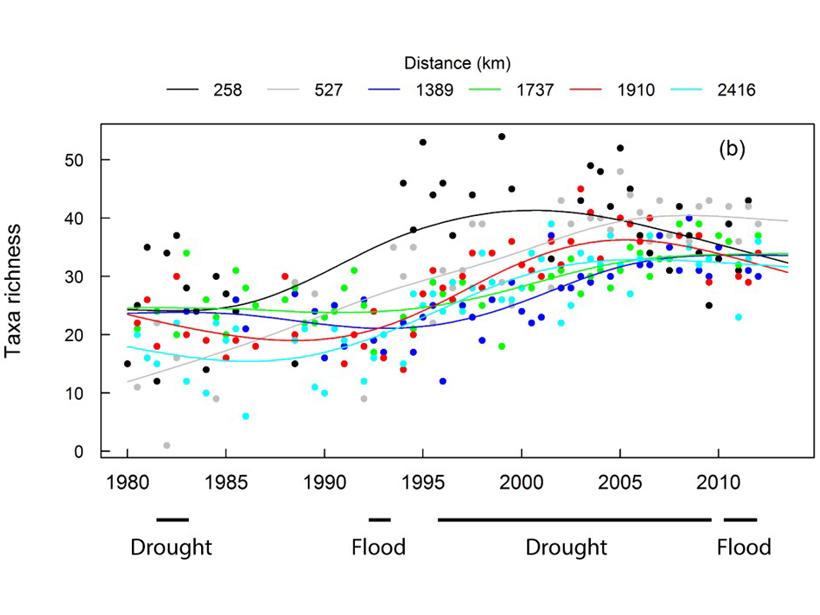Source: Water Resources Research
The Murray-Darling Basin in South Australia, like many of Earth’s major river systems, is an important source of water resources for agricultural use, and urban water supply. It also sustains natural communities of macroinvertebrates, such as insects, crustaceans, and mussels.
River flow is sustained by groundwater that has accumulated a high salt content over millennia because of low rainfall rates and high rates of evapotranspiration (or water lost to the atmosphere). Irrigated agriculture has raised groundwater table levels, resulting in increased inputs of saline groundwater into the Murray River. This has posed a health risk to humans, while flood management and the effects of agriculture on river water chemistry have impacted the macroinvertebrates.
Paul et al. [2018] include an analysis of an impressive dataset collected over a 33-year study of water chemistry and biology along the 2,300-kilometer length of the Murray River. The data are rich in terms of both temporal and spatial coverage of species, hydrology, and groundwater chemistry (i.e., salinity), and provides new insights on the effects of land management on river systems and their biology. Among other findings from this work is a better understanding of the roles played by salinity reduction on restoring the biological health of the river. The results address globally important issues in water research—floods, droughts, salinity, and management of large river systems.
Citation: Paul, W. L., Cook, R. A., Suter, P. J., Clarke, K. R., Shackleton, M. E., McInerney, P. J., & Hawking, J. H. [2018]. Long‐term Monitoring of Macroinvertebrate Communities Over 2,300 km of the Murray River Reveals Ecological Signs of Salinity Mitigation Against a Backdrop of Climate Variability. Water Resources Research, 54. https://doi.org/10.1029/2018WR022976
—D. Scott Mackay, Editor, Water Resources Research
Text © 2018. The authors. CC BY-NC-ND 3.0
Except where otherwise noted, images are subject to copyright. Any reuse without express permission from the copyright owner is prohibited.

